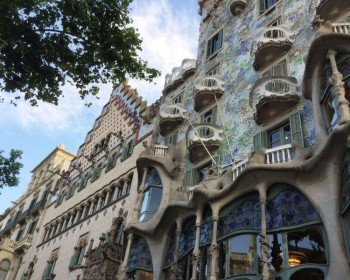You will remain totally enchanted and enraptured by the guitar music and the golpear, taconear and zapatear of the dancers. The art of Flamenco has now passed the national borders and is admired throughout the world. Fascinating and unique, in 2010 UNESCO recognized Flamenco with the label “Inmaterial Cultural Humanity’s Heritage”.
The origins of flamenco can be found in the book “Cartas Marruecas” written by Cadalso. Mainstream thought accepts that it was the “gitanos” that safeguarded the art of Flamenco. But where did the word Flamenco orginate from?
Some think that the term “flamenco” descended from the arab word Al- Andalus (felag mangu) meaning “Fleeing peasant”. If you think about it, this seems to describe the style of Flameno fairly accurately! Flamenco is commonly thought to have three distinct eras: from 1860 to 1910 is considered the “The Golden Age,” from 1910 to 1955 “Opera flamenca” and from 1955 “The Renaissance”.
Flamenco was born in Andalusia, a region situated in the South of Spain. Some think that the movements are similar to North African dance. A theory that would not be suprising given the two regions’ geographical proximity. But as well as being attribuyed to the “Mori,” the arab community from North Africa, it is also suggested that it was the Jewish community, very prelevant across the Iberian Peninsula in this period.
Normally, the group of flamenco is composed of a guitar player, a singer and some dancers. The guitarist composes a musical accompaniment for the singer who invents the lyrics and the dancers, in turn, the choreopgraphy associated with movement of the hands, the arms and the legs to complete the circular flow of the spectacle.
The continuos golpear y taconear create agile and pleasing arm movements that raise the heartbeat and create a real energy. Few things provoke a similar sensation and such profund emotions. In flamenco we can distinguish different musical styles named “Palos”, that total over 90 and are distinguished by rhythm, speed, tonality and melody, as well as their geographical origin. Some of the more famous types of Palos are alegria, buleria, jaleo, tango (flamenco), fandango, farruca and sevillanas. The bulerias are composed of three or four bars of eight syllables each. The compas (music time) can be divided into cycles of twelve and the accents are on the 3rd, 6th, 8th, 10th and 12th. In tango, to make a comparison, the accents are on the 2nd, 3rd and 4th.
The costume associated with Flamenco is also very stunning and specific to the genre. The “traje de flamenca” or “traje de sevillana” is usually a dress that is tight at the waist, with exposed shoulders and patterned in pois (dots) named lunares in Spanish, most commonly colored red, black or green. These magnificent dressed are tailored in house or created by great atelier in the cities. The shoes are also fantastic: made with many colors and materials, suede, black or red, or leather in different and brilliant colours. The accessories deserve a whole section of their own: manton or shawla in silk or satin, peineta or hair clip to brush the hair with flowers. Other accessories include castanets, to keep the rhythm, and a fan to enrich the dazzling effects of the dancers’ movements.
The history of flamenco is sprinkled with famous guitarists, singers and dancers.
Everyone remembesr the magic touch of Paco De Lucia and his guitar: it is unmistakable! His bulerias or his instrumental songs are very special to listen to (on YouTube you might find his albums such as “Siroco,” one of the best, that contains some of his most famous songs). Paco De Lucia has even starred in a film called “Carmen” that illustrates the famous Opera written by Bizet. The film is arranged like a theater show performed by a company, that sings and dances.
Paco De Lucia was also the guitarist of one of the most well-known Flamenco singers: Camaron de la Isla (his real name was Jose Monge Cruz). In 1968 both perfomed in a traditional club Torres Bermejas in Madrid. Other famous women, such as Dolores Vargas, have been welcomed to the best stages not only in Spain but across the world. One of the most famous female dancers is Antonia Santiago Amador. She was originally from Barcelona and her career started in the club named “La Bota,” situated in Tossa Del Mar, still in the Catalonia region of Spain. The description of her type of dance is so fascinating! “ Her type of dance was without comparison, a feet technique unusual for the time, her movements tormented, having an impact on the public, like light diffusion made by a creature from an another world.”
She was defined also “the best teacher of Barcelona’s”. Some dance steps are the taconeo, keeping the rhythm with the feet or braceo, the delicate arm movements, punteado with the point and heel or the pateo, a strikes very strong on the floor.
Across all of Spain you will find many Flamenco festivals. There is also a Flamenco Route that involves cities in Andalusia and in other regions. In the course of the year you might see the “Bienal the Flamenco” or “Festival de Cante de Las Minas”, “Las Noches de Embrujo” or “Festival de la Guitarra”. Sevilla is the city most representative of Flamenco, where you can find the “Centro Andaluz de Flamenco” and “Museo del Flamenco.” But in many other cities you can enjoy the same dazzling spectacles as well.
Experience first-hand a flamenco experience, in Barcelona. It is something magical and special. Book with us a Flamenco Show, with dinner or without, and appreciate the beautiful dance and music.
What are you waiting for?










